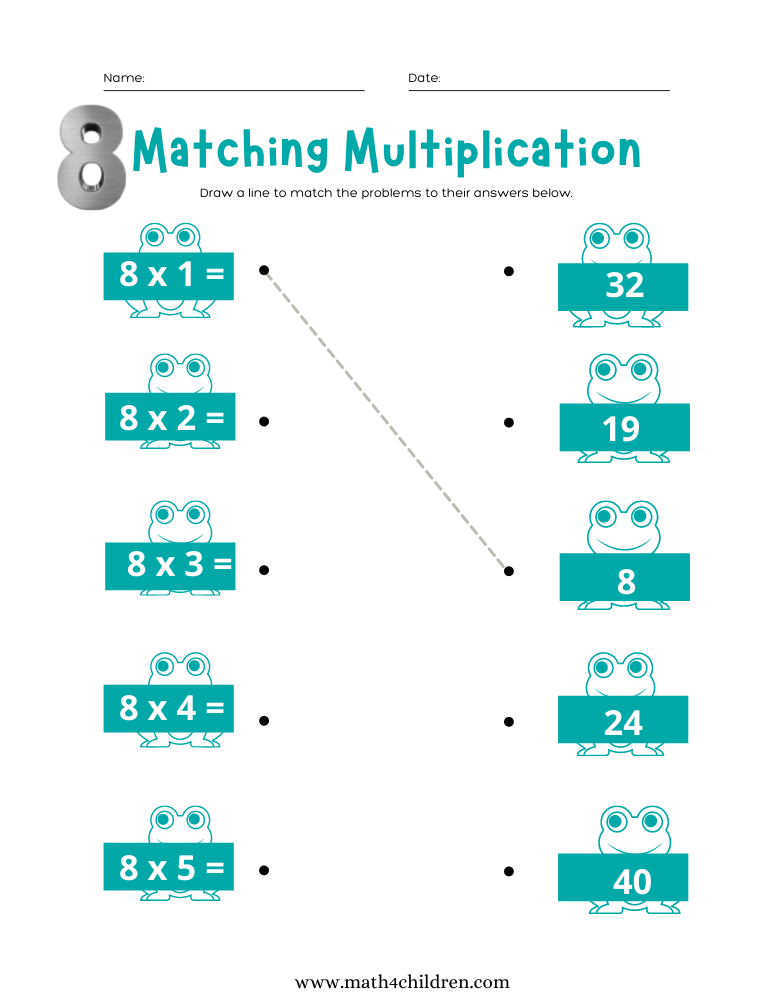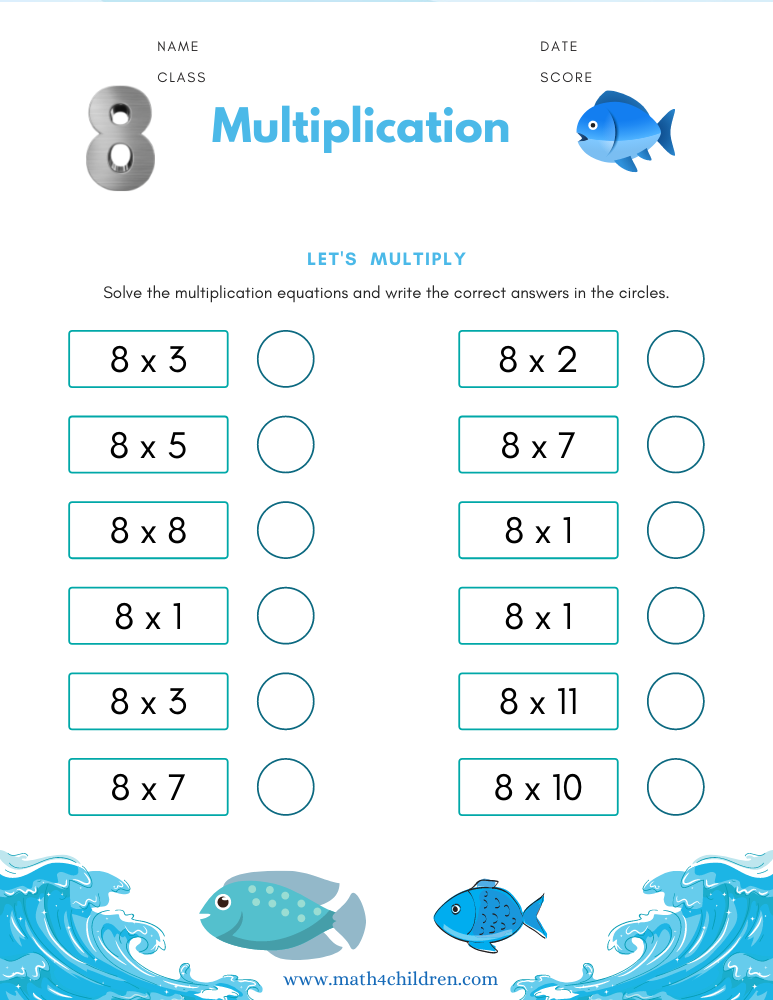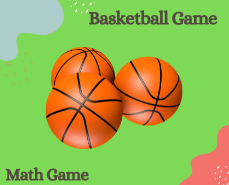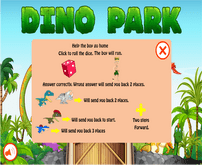8 times tables worksheets pdf | 8 times table chart | 8 times 8
8 times tables worksheets pdf | multiplication by 8 tests pdf | 8 times table | 8 multiplication table | 8 times 8 - This page contains a collection of math worksheets which children in different grades can use to learn how to multiply different numbers by eight. Although we are multiplying by eight, the principles are the same. If you have not understood these principles until now, it is safe to go back to the video below this page and watch simple steps on how to do it with the aid of objects. As children pick up these skills, it is also important to build their mental math abilities. A great way to go about it is to make them review with multiplication tables. We have made the activies more exiting by using matching with frogs activities, fill in the blanks, complete the missing number in circles and more. All these sheets are free; rememeber to share.
Have fun learn how to multiply by eight. Remember to check out the video below if you are still struggling with the basics of multiplication. Homeschooling parents and teachers work hard to properly teach their kids about mathematics. If you’re feeling a little tired preparing their worksheets yourself, however, feel free to use our collection of worksheets as a convenient and comprehensive math resource.
We put together these 8 times table worksheets PDF as an intuitive and easy way to get your child solving a bunch of multiplication problems and hone their elementary math skills.
In teaching your child the multiples of 8, memorizing might not be the best way to start. Instead, you might consider approaching the subject through various contextual and real-life problems. This can help anchor the concept of multiplication to your child’s head as well as provide them a tangible example of the benefits and uses of multiplication in common settings.
If your kids have active imaginations, you can have them close their eyes and visualize a whole pizza pie with eight slices. Through this mental exercise, a single pizza pie could be used to represent the value of 8. You can then instruct your child to picture out two whole pizza pies and ask them how many slices are present in total. This exercise can then be expanded further so they can find out how many slices are in an increasing amount of pizza pies.
Real-life imagery like the aforementioned example can be very useful in introducing the concept to kids. However, to truly develop your kids’ ability to multiply numbers, they’ll need to sharpen the skill by solving problems. By investing a little effort, determination and encouragement, your child can quickly breeze through our multiply by 8 tests over time.
Give your kids an advantage in elementary math quizzes, exams and competitions with our downloadable worksheets in PDF format. As PDFs, their formatting and layout don’t get disorganized after downloading.
Multiplication tables video - Learn how to multiply
Introduction to the 8 Times Table Chart
The 8 times table chart is a valuable educational resource that simplifies the process of learning multiplication. It consists of rows and columns, with the rows representing numbers to be multiplied and the columns representing the multiplier. The intersection of a row and a column provides the product of the two numbers. This visual aid is particularly helpful for students who are just beginning to grasp the concept of multiplication.
The Basics: Understanding Multiplication
Before we delve into the 8 times table chart, let's briefly review the fundamental concept of multiplication. Multiplication is the process of adding a number to itself a certain number of times. For example, 3 multiplied by 4 (3 x 4) is equivalent to adding 3 four times (3 + 3 + 3 + 3), resulting in 12.
The Significance of Learning Multiplication Tables
Learning multiplication tables is a crucial milestone in a student's mathematical journey. It forms the foundation for more advanced mathematical concepts and problem-solving skills. The 8 times table, in particular, has its significance in various real-life scenarios, from calculating measurements to determining proportions.
Why Focus on the 8 Times Table?
While mastering all multiplication tables is important, the 8 times table holds a unique place in mathematics. It is often considered one of the more challenging tables to learn due to its relatively larger numbers. However, once mastered, it provides a solid mathematical foundation and makes tackling more complex math problems significantly easier.
Components of the 8 Times Table Chart
The 8 times table chart typically includes numbers from 1 to 10 as the multiplier and their respective products. Each row represents a number from 1 to 10, and each column represents the multiplier. The chart displays the multiplication results clearly, making it easy for students to visualize and memorize.
How to Use the 8 Times Table Chart
Using the 8 times table chart is straightforward. Students can start by selecting a number from the leftmost column (the multiplier) and follow the row to the right to find the products of that number when multiplied by numbers 1 through 10. Regular practice with the chart helps in memorizing multiplication facts effortlessly.
Benefits of Using the 8 Times Table Chart
The 8 times table chart offers several advantages:
-
Visual Learning: The chart provides a visual representation that aids in understanding multiplication.
-
Quick Reference: Students can quickly find multiplication results, saving time in calculations.
-
Improved Mental Math: Regular use of the chart enhances mental math skills.
-
Confidence Building: Mastering the 8 times table boosts a student's confidence in mathematics.
Enhancing Mathematical Skills
Learning the 8 times table isn't just about memorization; it's about developing essential mathematical skills. It encourages critical thinking, problem-solving, and a deeper understanding of numerical relationships.
Practical Applications of the 8 Times Table
The knowledge of the 8 times table extends beyond the classroom. It is useful in various real-life situations, such as calculating prices, measurements, and proportions. This practical applicability underscores the importance of mastering this multiplication table.
Challenges and Tips for Learning the 8 Times Table
While the 8 times table can be challenging for some students, there are effective learning strategies and tips that can make the process more manageable. We will explore these techniques in detail to help learners overcome obstacles.
Interactive Learning Tools for the 8 Times Table
In today's digital age, there are numerous interactive learning tools and apps available to make learning the 8 times table engaging and fun. We'll discuss some of the best resources for both students and educators.
Teaching Methods for the 8 Times Table
Educators play a pivotal role in teaching the 8 times table. We will explore effective teaching methods and strategies that can be employed in classrooms to facilitate better understanding and retention.
The Role of Parents and Teachers
Collaboration between parents and teachers is essential in a student's educational journey. Discover how parents and teachers can work together to support children in mastering the 8 times table.
Common Mistakes and How to Avoid Them
We'll highlight common mistakes students make when learning the 8 times table and provide guidance on how to avoid these pitfalls.
Conclusion: Mastering the 8 Times Table
In conclusion, the 8 times table chart is a valuable tool for anyone embarking on their mathematical journey. By understanding its importance, utilizing effective learning strategies, and embracing the benefits it offers, students can master the 8 times table with confidence.
Frequently Asked Questions (FAQs)
-
Is it necessary to memorize the entire 8 times table chart?
- While memorization is beneficial, understanding the underlying concept of multiplication is equally important.
-
What are some fun ways to teach the 8 times table to children?
- Incorporating games, songs, and interactive activities can make learning more enjoyable for kids.
-
How can parents support their children in learning the 8 times table at home?
- Parents can create a conducive learning environment, practice with their children, and provide positive reinforcement.
-
Are there online resources available for learning the 8 times table?
- Yes, there are many websites and apps that offer interactive tools and practice exercises.
-
Is the 8 times table relevant in real-life situations?
- Absolutely. The 8 times table is used in various everyday scenarios, from shopping to cooking and DIY projects.












